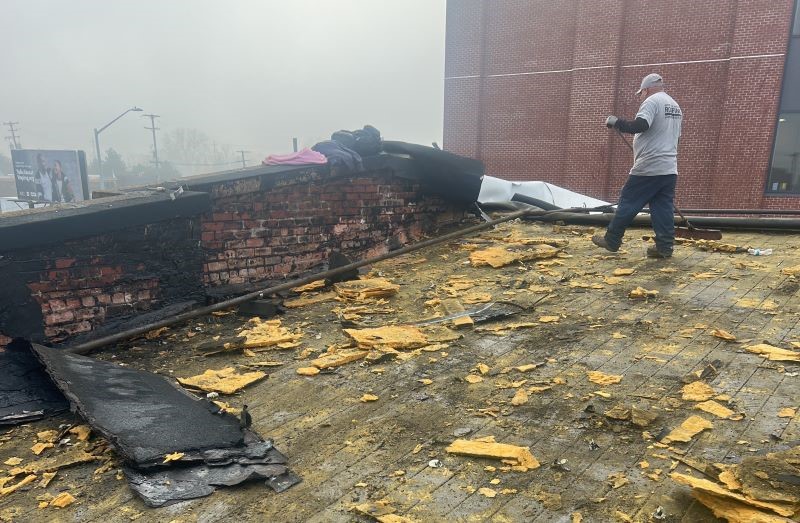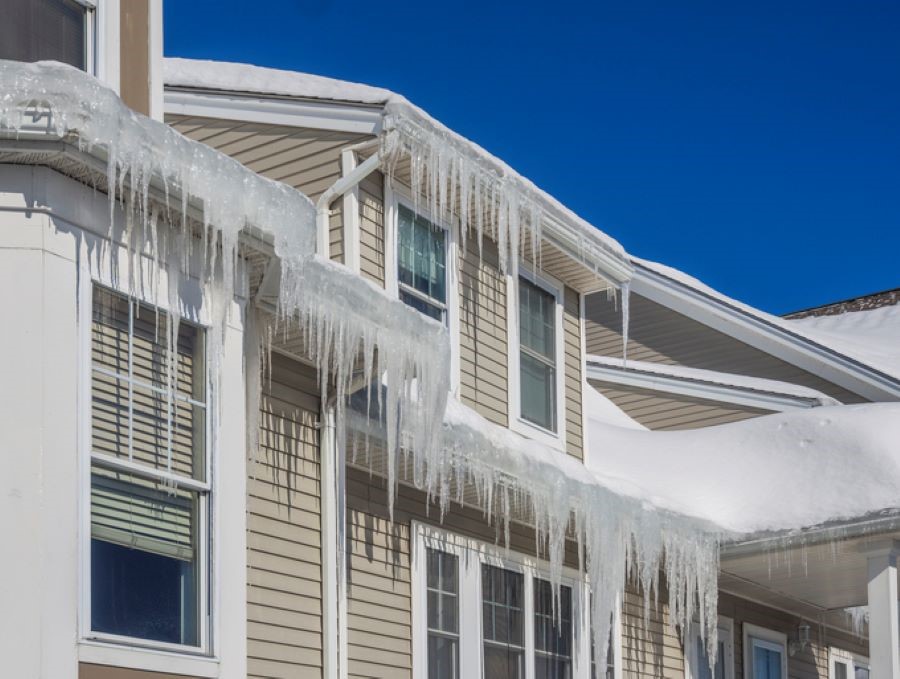You can learn a lot from looking at your roof. Some things are obvious, like needing to replace shingles if you notice some missing. Or, if you see ice dams in the winter, you have to check your insulation before you find yourself with a huge problem.
What about the less obvious things your roof is telling you, even in plain sight? More specifically, what are those dark streaks doing up there?
What Are Dark Streaks on a Roof? Is It Black Mold?
Dark streaks on rooftops are extremely common. If they’re not on your roof, they’re probably on the house next door, or down the street, or at least in the neighborhood. From a distance, it simply appears as if the shingles are dirty, and you might even tell yourself the rain will wash it away. Except it won’t; it might even make it worse.
The streaks—usually dark brown or black—aren’t simple dirt. Most likely, they’re not even moss, or mold, or mildew. What you’re probably looking at is blue-green algae.
How Is Blue-Green Black?
Blue-green algae wants to thrive, even at the expense of your home’s cosmetic appeal. In order to protect itself from UV rays, the algae creates its own coating. This coating is hard and dark, and that’s what you’re seeing.
Where Does It Come From?
The algae (real name gloeocapsa magma) travels with the wind, which is why it’s so easy to find from house to house. If one house in the neighborhood has it, all houses are at risk. Although blue-green algae can get its water from rain, it doesn’t need it; dew and humidity are all it needs to thrive.
Black streaks are far more prevalent today than ever due to the ever-increasing limestone content in shingle manufacturing. Mold is attracted to limestone, so manufacturers will coat some of the granules on the singles with copper in an effort to mitigate any mold or algae growth.
Some manufacturers make algae-resistant shingles that include a larger copper content, which will come with a longer warranty, as well. You should take note of exactly what your warranty covers, though—there are many different types of mold, algae, lichens, and moss, but only certain types are covered.
Does Blue-Green Algae Damage the Roof?
Thankfully, there’s no proof that blue-green algae damages asphalt shingles simply through its formation. So, even if you have dark streaks on your roof, and even if those streaks keep growing, the material probably isn’t being damaged, although if you leave it alone for too long, it could possibly hurt your shingles.
Still, by hurting the appearance of your roof, you lose curb appeal, which is bad enough, and some of your home’s value, which is probably even worse. Potential buyers will pay a lot more for a home with a healthy, attractive roof.
Further, the more surface area the algae covers, the harder it is for the roof to reflect light and keep your home cool. If you have mold or algae on your roof, it doesn’t mean your roof needs to be replaced, but if aesthetics are important to you, getting your roof washed is imperative.
Elimination and Prevention
To get rid of the blue-green algae, you should contact a professional roof-cleaning company, who will likely use a soft-wash technique to get your roof back to pristine shape. We don’t recommend you doing the job yourself; cleaners will make your roof slippery, making it even more dangerous than usual to be up there.
If you want to be even more proactive, talk to us about zinc- and copper-laced products we can install at the peaks of your roof. When it rains, oxidization coats your roof over time with the zinc or copper, which helps protect your entire roof against mold and algae.
Help protect your roof from allowing the algae to form at all by taking regular care to remove any branches or debris, clean your gutters, and visually inspect your roof a couple times a year. Proactive maintenance and catching any potential problems early are essential in keeping your roof as healthy as it can be for as many years as possible.
Subscribe to West Michigan Roofing's Blog





Comments